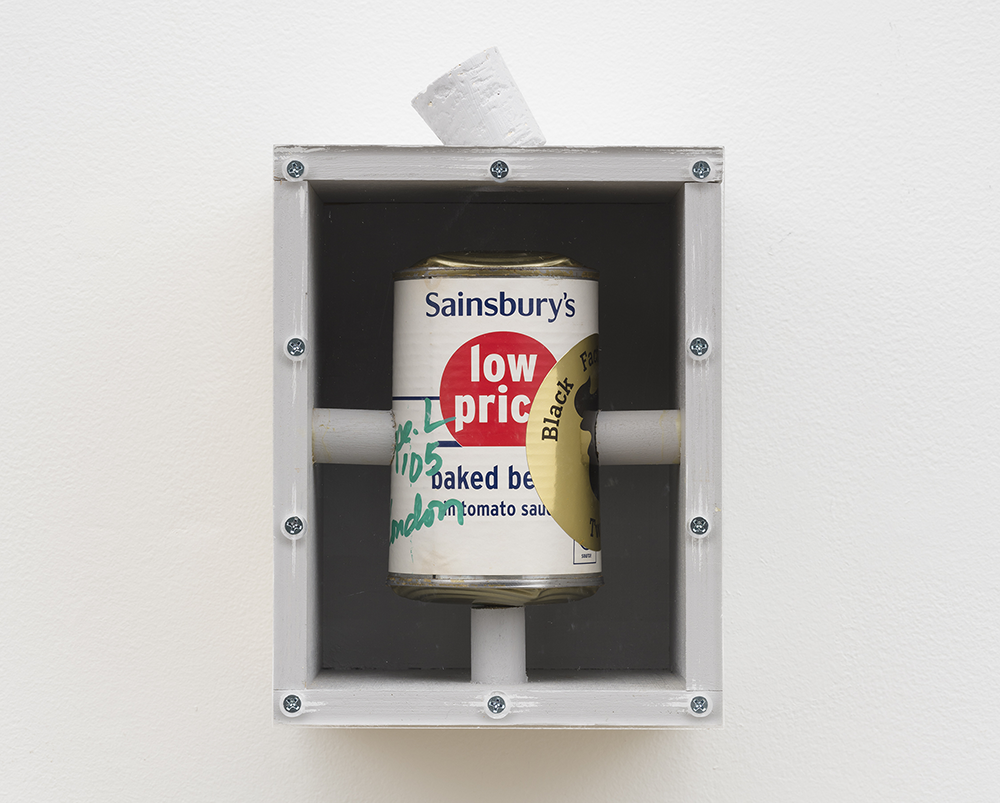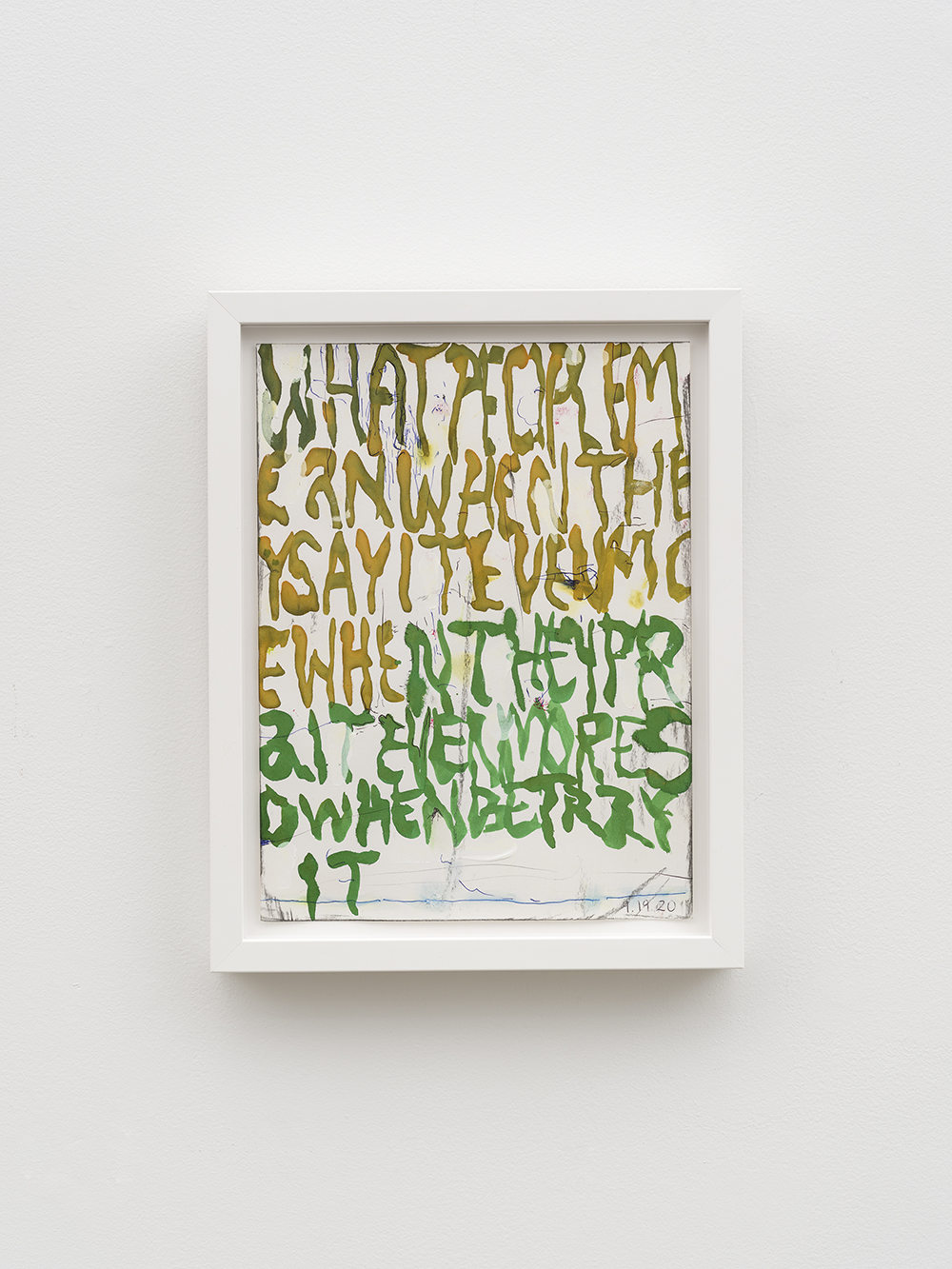Your cart is currently empty!
Pope.L Vielmetter Los Angeles

This edition of Pope.L’s thinning theatrics presents a series of immaculate white shacks, their size of a two-holer, containing a carpeted bench, where viewers may test the limitations of their endurance. An unsuspecting and luckless couple may sit together in one of these dark and claustrophobic huts and view a bizarre rendition of themselves that makes Edward Albee’s Martha and George seem frothier than Ozzie and Harriet. It will leave the viewers nonplussed and ears aching, for the videos presented in these cramped and darkened sheds are willfully eccentric and the audio overwhelmingly loud. The back of the shacks reveals the black mechanical side of the video monitors. This aspect is far more peculiar, in its technical necessity, and far more intriguing than the hut and the films shown within. The rear end of a TV is the hands-down winner in the exhibition, in that it retains mystery and is not overbaked.
The former beating heart of this sideshow, a single final shanty, seemingly dismembered, appears as a wizard’s rubbish-strewn lair, exploded and abandoned until so much byzantine effort is realized as a fool’s errand. The projector is feathered with Post-it notes and stands outside the three-walled open shack like a broken-down
kinetoscope; vinyl tubing lies on the floor. The rubber-masked actors, the bee-keeper-suited experimenter, the fortissimo audio, are all more than a viewer should be forced to endure. But there’s more, in the form of beans: low- priced Sainsbury baked beans.

These beans litter the gallery walls as well as the huts and bear the signature and seal of the artist. Their vitrines—resembling miniature bank vaults—are spot lit, as if ready for their close- up. If so, much patience will be required. Their shape has a familiarity, much like the “Break glass in case of fire” alarms that once dotted the halls of middle schools. The cans are misshapen, suggestive of spoilage, as if their gaseous interior breakdown threatens to overwhelm their metal seals and escape in a vitrine-soiling explosion. Such a result would have been welcome, giving some life and interest to the repetitive and underwhelming array.
Also included are some of the colorful and crudely lettered text works on paper for which the artist is best known. They are mounted daintily, almost as an afterthought, and seem embarrassed by the lack of subtlety and depth in the rest of the exhibition. Some of them are missing, leaving only an illuminated empty bracket on the gallery wall; a deliberate escape should be presumed. The exhibition’s entry work is a pedestal with a Plexiglas box atop it, stickered carelessly with saran wrap, giving it the look of a Halloween decoration. Inside the box is a schematic of the sheds. Its revelatory dimensions add nothing to the exhibition.
[/et_pb_text][/et_pb_column] [/et_pb_row] [/et_pb_section]